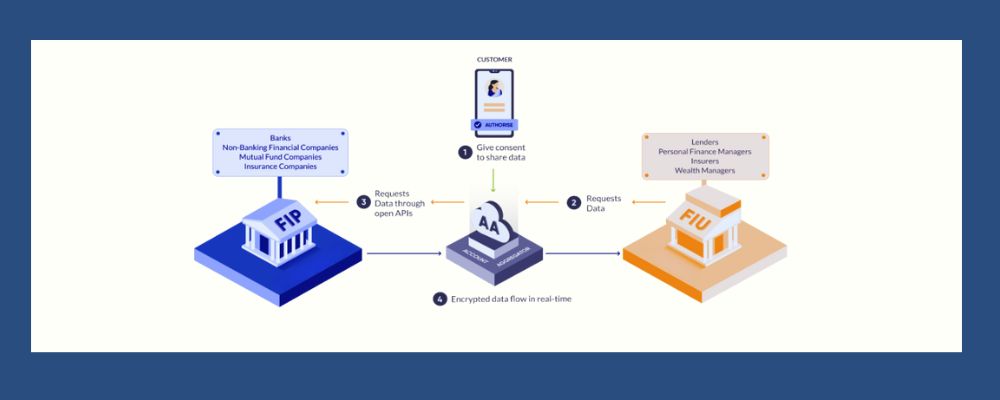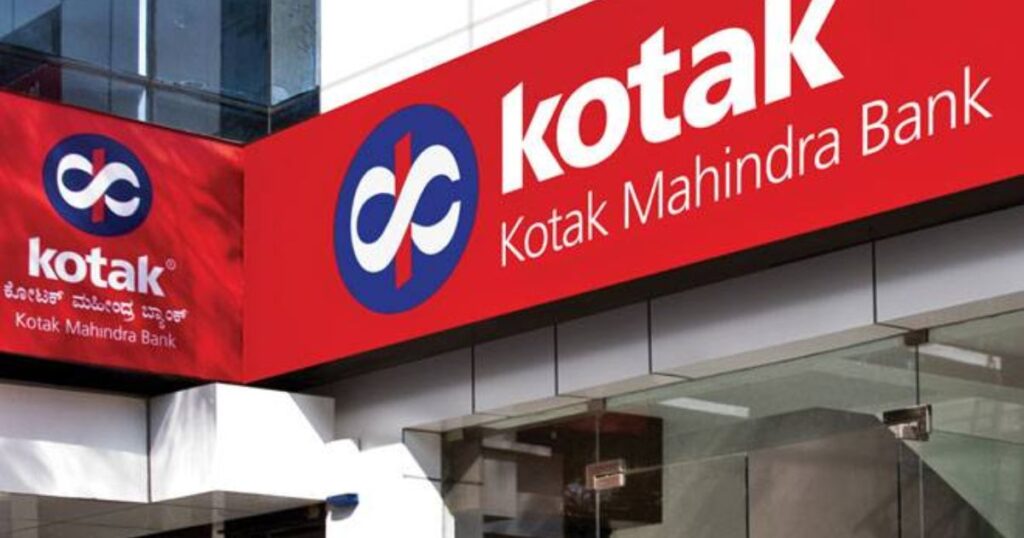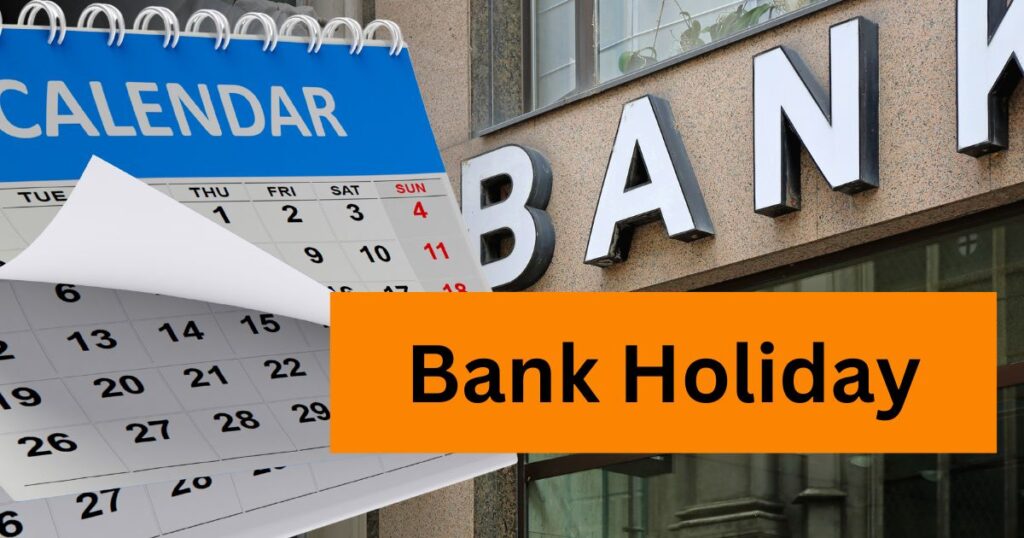Have you ever foraged through your documents seeking a specific statement pertaining to a particular month, or a document you never thought you’d need? Documents have been a part and parcel of the way of functioning in several institutions. It’s a usual sight to spot somebody holding a bag full of documents in a bank.
While that may have been the erstwhile method of getting your work done from a bank, this may soon be a memory.
Financial Stability and Development Council (FSDC) (consisting of RBI SEBI, PFRDA, and IRDAI), in 2021 made its Account Aggregator Framework open to all. You must be wondering then, what is it and how it could disrupt the status quo?
We’ll guide you through everything you need to know to understand the Account Aggregator Framework, the players or elements of this framework, how it functions, and how it could affect the functioning of banks, NBFCs, and your experience with financial institutions.
What is an Account Aggregator Framework Meaning and how does it work?

An Account Aggregator Framework is a data-sharing model in the financial institutions and service providers, enabling users to track all of their investments or obtain credit, insurance, and other financial products more easily. It seeks to digitalise the process of availing financial services and iron out the inefficiencies.
There are 4 players in an Account Aggregator Framework-
- Account Aggregators (Consent Manager)
- Financial Information Providers (FIP)
- Financial Information Users (FIU)
- Technical Service Providers (TSP)
Account Aggregator.
According to the Master Directions issued by the RBI, an Account Aggregator is a Non-Banking Financial Company (NBFC) with an Account Aggregator license, i.e. NBFC-AA.
An Account Aggregator after receiving consent from an individual, retrieves, collects, and shares specific financial details of an individual requested by the banks. It may also organize such details in the format required by the banks.
Financial Information Provider (FIP)
Financial Information Providers are Banks, NBFCs, Mutual fund houses, Insurance providers, Tax Platforms (like GSTN), etc. These are the institutions from which an Account Aggregator seeks an individual’s financial information. An FIP (Financial Information Provider) is usually an individual’s existing bank.
Financial Information User (FIU)
A Financial Information User is either a Bank, an NBFC, a Wealth Management Company, a financial consulting company, or any other entity which may require your financial data to provide you services. An FIP (Financial Information User) in most cases is a lender which may require your Bank Statement, GST Returns, Income Tax Returns, and other financial documents.
Technical Service Provider (TSP)
A Technical Service Provider usually offers services useful for a Financial Information Provider or a Financial Information User. They provide Certification services, Credit Score services, Data Analytics, etc.
They can even provide validation services for Account Aggregators and act as the point of contact between AAs, FIUs, and FIPs.
After gathering basic information about the players in an Account Aggregation Framework, we can now understand how it works.
How does the AA Framework work?
The Account Aggregator Framework comes into play wherever there is a transmission of financial data required. It works in a 4-tier system-
- First, an Account Aggregator seeks the consent of an individual for specific data required by a Financial Information User (usually a lender/bank) to provide the individual its services.
- The user gives a time-bound consent to access their financial data from the institutions they have an existing account with (Financial Information Provider).
- The Account Aggregator then approaches the Financial Information Provider (existing bank of the individual) with the user’s consent and retrieves their financial data with an end-to-end encryption.
- The data is then shared with the Financial Information User (FIU). The FIU (lender) may either organize the data according to its requirements on its own, or seek the help of a Technical Service provider (TSP) in processing the data.
How safe is the AA Framework?

Apart from being end-to-end encrypted, the data transmission has to adhere to the ReBIT guidelines issued by the RBI. Thus, the Account Aggregator cannot read your data and is data-blind.
The data sought by an Account Aggregator also does not remain with them since they cannot store the data. They function simply as an intermediary to share the data from an FIP (Financial Information Provider) to an FIU (Financial Information User).
The consent to retrieve the data is usually for a period of time and it could either be rejected by the individual or revoked once that time period has elapsed.
What type of information is shared with an Account Aggregator?
The following type of information may be shared with an Account Aggregator once an individual grants them consent-
- Bank deposits including fixed deposit accounts, savings deposit accounts, recurring deposit accounts, and current deposit accounts.
- Deposits with NBFCs.
- Structured Investment Product (SIP).
- Commercial Paper (CP).
- Certificates of Deposit (CD).
- Government Securities (Tradable).
- Equity Shares.
- Bonds.
- Debentures.
- Mutual Fund Units.
- Exchange Traded Funds.
- Indian Depository Receipts.
- CIS (Collective Investment Schemes) units.
- Alternate Investment Funds (AIF) units.
- Insurance Policies.
- Balances under the National Pension System (NPS).
- Units of Infrastructure Investment Trusts.
- Units of Real Estate Investment Trusts.
- Goods and Services Tax (GST) Returns, viz. Form GSTR-1 and Form GSTR-3B.
- Any other information as may be specified by the Bank from time to time.
Which Account Aggregators have been granted the license to operate by the RBI?

Account Aggregators need an NBFC-AA license to function within the ecosystem. Currently, the following Account Aggregators have been given the license by the RBI-
| 1. | CookieJar Technologies Pvt Ltd. |
| 2. | CRIF Connect Pvt Ltd. |
| 3. | NESL Asset Data Ltd. |
| 4. | Protean SurakshAA |
| 5. | Perfios Account Aggregation Services Pvt Ltd. |
| 6. | PhonePe Technology Services Pvt Ltd. |
| 7. | Yodlee Finsoft Pvt Ltd. |
| 8. | Unacores AA Solutions Pvt Ltd. |
| 9. | Finsec AA Solutions Pvt Ltd. |
| 10. | CAMSFinServ |
| 11. | Finsec AA Solutions Pvt. Ltd. |
Other than these, 6 AAs have in-principle approval from the RBI. These are-
- Digio Internet Pvt Ltd.
- OMS Fintech Account Aggregator Pvt Ltd.
- PB Financial Account Aggregator Pvt Ltd.
- Agya Technologies Pvt Ltd.
- Cygnet Account Aggregation Pvt Ltd.
- Tally Account Aggregator Services Pvt Ltd.
How does the Account Aggregator Framework affect consumers, banks and other institutions?

The Account Aggregator Framework reduces the inefficiencies in the traditional brick-and-mortar way of functioning wherein a person has to carry their documents and certain proofs whenever they’re in need of a loan or any other financial service.
Apart from creasing out inefficiencies, the infrastructure ensures that the data is authentic and not tampered with. The infrastructure also makes the role of physical notarization redundant.
With TSPs entering the picture, loans could be better customized for the customers and opportunities for innovation open up.
Way Forward
With the GSTN poised to join the Account Aggregator Framework by July 2023, the AA Framework would supplant the current modus operandi of Banks, NBFCs, and other Financial Institutions.
With a big chunk of the population still out of the formal economy, it offers a window to increase the penetration of financial institutions with small ticket products.
In the coming years, one is bound to see new FinTech’s rising up as TSPs and offering bespoke services to financial institutions.
Once the tax network becomes a part of the framework, it would also open up new avenues of credit for MSMEs and help in financial inclusion.
Frequently Asked Questions on AA Framework:
1.What do Financial Information Users do with the data shared?
The FIUs (Financial Information Users) usually analyze your data to provide services. For example, a bank may analyze your bank statement to determine the rate of interest to be offered while giving a loan.
For the same, they may take the help of TSPs (Technical Service Providers). TSPs could provide negotiation services, calculate credit risk and score using data analytics, and so on.
2.Which banks and financial institutions have joined the AA Framework?
As on 7th November 2022, 17 banks and 48 non-banks had joined the AA Framework with all Public banks being a part of it.
Among the Private Banks, HDFC Bank, ICICI Bank, IndusInd Bank, Kotak Mahindra Bank, Axis Bank, IDFC First Bank, AU Smart Finance Bank, Yes Bank, and Karur Vysya Bank have joined the Accounts Aggregator Framework.
3.How can an individual be a part of the Account Aggregation Framework?
A user has to register with an Account Aggregator to be a part of the Account Aggregation Framework. The Account Aggregator must have an NBFC-AA license. The user does not have to register with every Account Aggregator, since registration with only one suffices.
4.What is SAHAMATI?
SAHAMATI is an industry alliance body incorporated as a Non-profit Private Limited Company under the Companies Act, 2013 to further enhance the Account Aggregator Framework.
5.Will the AA framework have an influence on data privacy?
The account aggregators do not have access to the information; they merely move it with the individual’s consent from one financial institution to another. Given that the sent data is also encrypted, using this approach is much more secure than handing out physical copies of documents.
















